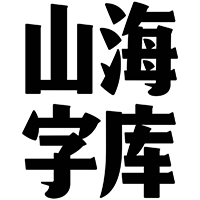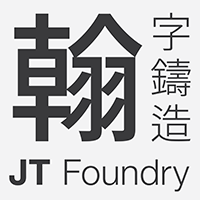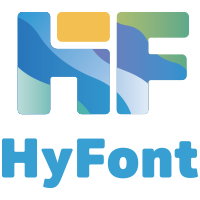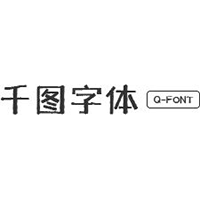ScreenFonts: Diana, Thor: The Dark World, Oldboy, Mandela: Long Walk to Freedom

Observant readers may have wondered why I didn't review the poster for Design Is One: Leila & Massimo Vignelli last month. Even better, very few people know that the film's production company e-mailed me to ask if I was interested in writing about the documentary, and offered to send me a screener. My reply may have put them off:
In principle I am interested in such projects and would consider reviewing the documentary. The trailer definitely looks interesting. However The FontFeed has a clear focus on typography. Despite his massive achievements in design, purely in the field of typography I trust Mr. Vignelli's views as much as I trust my general practitioner's on complex neurosurgery. He is a reactionary and frankly not that good typographer with very strong yet misguided opinions. So I am not sure how my review would turn out. I'll let you decide whether you still like me to do this.
After a reply thanking me for my candid response, I eventually never received the screener…
Introduced by For Ellen and Ain't Them Bodies Saints use an almost identical colour palette – unifying the image and further stylising it. Unlike the poster for Like Crazy the movie title in Gotham is very well set as a solid block. Even though the three words that make up the title have different numbers of letters there are no real spacing issues because "walk" has wider letters. Their delicate, transparent hues make the words blend into the overall image, yet they remain perfectly readable.
It's always a joy to feature artwork by ScreenFonts. Not only because the talented artist produces very consistent quality, but on top of that she has a versatile illustration style and is not afraid to take risks. If she hadn't told me I may never have guessed this secondary – but still official – poster for The Pervert's Guide to Ideology was her work.
Akiko said she had so much fun working on it, and Adrian Curry from Zeitgeist Films was an absolute pleasure to work with for this project. She chose this specific illustration style to solve two challenges that came with the assignment. First, there were so many film scenes analysed and discussed by Slavoj Žižek, no one more prominent than another, that a "more is more" approach seemed the best option to loosely represent the majority of them. Second, Zeitgeist Films did not have legal rights to feature any images from the film scenes photographically or even illustrate them with direct likeness (other than Žižek himself) for the poster. Being an admirer of Heinz Edelmann, Akiko took notes from his visual language as a great solution for this. She also felt this style gave a lighter feel to the at times heavy subject matter. The movie tile looks appropriately recent-retro in ITC Garamond Ultra Condensed.
The US one sheet for Sake-Bomb is a delicious throwback to the vintage French advertising posters from the early 20th century. Flat, subtly textured graphics in gentle, light colours form a joyous puzzle which has all the elements clicking into each other – the sake cup doubles up as the noses of the two characters, and the beer glass fits snuggly under their chins. Typographically there is a huge missed opportunity here, as a genuine Art Deco display face like for example Mostra Nuova would have suited the illustration style much better than this generic narrow sans (it's not Alternate Gothic but close).
Now that we're on the topic of French poster design – contemporary examples often leave much to be desired. Even though it's not Microgramma / Eurostile Extended, Bank Gothic is only incrementally better on the original French poster of Mr. Nobody, the latest movie by Belgian director Jaco Van Dormael. Although it is structurally sound with some clever compositional and colour tricks, the poster itself doesn't really grab me. I have the impression it tries very hard to tell as much as possible about the movie within the limited confines of the one sheet.
The US one sheet however is a whole other story. Splitting the face of the protagonist in a younger and older half hints at both the central theme of (not) making decisions and the confusion about his real age. The addition of the intriguing circular fragments symbolise the ripples those decisions create in the time-space continuum, making for an adventurous poster design. As it has strict geometric shapes ITC Avant Garde Gothic nicely complements the artwork and gives it a futuristic atmosphere matching the setting of the film in the year 2029. A strong design with impact.
Betraying the sensationalist, even voyeuristic subject matter the US one sheet for Diana is shockingly restrained. The posture of the Princess of Wales, depicted small against the vastness of the ocean captures her loneliness and inner conflict in a poignant yet serene scene. The movie title and Naomi Watts' name are impeccably sized and positioned along a logical reading trajectory. The sparse typography, with the main text set in Adobe Caslon, looks rather bookish for a movie poster, yet it fits the overall atmosphere and image. I am almost embarrassed at how much I like this design.
If you keep the target audience in mind however the New Zealand poster by Part & Parcel on the left is more appropriate. The glamorous dress, jewelry and hairdo, and the elegant, slender serif letter forms of Trajan are befitting of Diana's near-mythical status with those who live their lives by proxy.
Yet nothing can top the Japanese poster on the right that I discovered through a tweet by Toshi Omagari. This design basically uses the same image but pulls out all the stops. Gone are the desaturated hues and tasteful typography, only to be replaced by an intense blue gradient, transparent pink roses, and hazy inserts. Nothing says "tragic fairy-tale princess" better that a canvas texture and frickin' beveled golden type with a bona fide crown resting on the end-'a'! Choke on this, good taste!
Composition-wise the movie poster for South-Korean thriller Blood and Ties is much better than you'd expect at first glance. The clever way her father's shoulder transitions into Da-eun's face creates a subliminal yin-yang motif. Offsetting her pale face against her father's black clothes is a metaphor for her discovery of the dark secret he carries.
Typographically speaking the poster is less good. It's a real shame how the red Myriad Condensed interferes with, and almost neutralises the tension created by the dark/light contrast. The rough brush script with the photographic texture of the movie title looks great, yet proves to be problematic in the lighter area at the bottom right, with some unfortunate clashing between the arms of the T and Da-eun's chin and throat. Also the red glow to increase the contrast between letter forms and background looks iffy.
Even if the original movie. The main reason why I picked Thor is for the alternate designs – the first two are from the gallery of posters commissioned by The Shortlist; the two posters by Matt Ferguson are from elsewhere.

The Canyons – created a faux-retro design inspired by the Silent Era. Peter has done several series of re-imaginings of contemporary posters in classic styles. Yet, apart from the "What if" poster of 2001 A Space Odyssey as if it was an old Fritz Lang film, this is an era in movie poster design history he has barely researched. As Peter started looking at Thor visuals / imagery the concept of holding the hammer kept appearing. This made him flash onto the epic-looking outstretched hand in the infamous M poster, also from Fritz Lang, and that became his starting point. Even though strictly speaking it is not Silent Era but just a couple years into the sound era it has the same feel.
Strictly speaking the typography is historically accurate, but not plausible. On the other hand this is a contemporary re-imagining, so some poetic license is acceptable. As a happy coincidence the main typeface Gill Sans Extra Bold was released in 1931, the exact same year as Fritz Lang's movie M. Movie posters however were hand lettered in a quite different style at that time. The supporting typeface Poor Richard is a Red Rooster digitisation based on the Keystone Type Foundry design, circa 1919, yet again it is not likely a metal face would have been used because hand lettering was the norm, even for smaller text.

I singled out this design by Paul Jeffrey because the choice of type is excellent on a formal level. The letter forms of Brothers at the bottom of the poster mimic the typical shape of Thor's iconic hammer depicted at the top.
This design by Matt Ferguson is dubbed the "Rorschach poster" for its intricate interpretation of Malekith's portrait in simple black on the cream background. Thor's eruption at the top gives the impression the face / mask explodes in perfectly symmetrical tiny bubbles. There is a very strange atmosphere to this wonderful design – part turn-of-the-previous-century Art Nouveau, part 70s psychedelic art.
Thor's silhouette in this other alternate poster by Matt Ferguson is identical to the one in the previous version. The style is adopted from the comic books the character originated from, with a blocky retro-looking comic sans (no, not the Comic Sans!) to match. Matt explained to me that he uses Futura as a base for pretty much all his posters, and often refines it and edits it for things like titles. In this case he made the type look as it was drawn with a flat brush – Matt wanted to reference the original Thor comic logo, but with a modern twist. This is a perfect stylistic match in this design, which makes me wish the typography in the previous poster harmonised better with the illustration style, something psychedelic or Arts & Crafts-like.
As the four designs for La Grande Bellezza (The Great Beauty) demonstrate, expressing the concept of beauty with typography is sometimes not as easy as you would think. Even though Alternate Gothic – a mainstay in book cover design – is a classic display sans, the movie title looks very stiff in poster on the left. The typeface used for the poster on the right is the poorly constructed and badly drawn Aver – its unbalanced lowercase looks painfully amateurish. Not exactly my idea of beautiful.

The English-language posters are equally problematic. Aver italic in the left poster was digitally condensed and thinned out, thus altering the slant and distorting the already stressed outlines. The poster on the right falls for the classic trap of combining a Didone with a swirly script, the typographic equivalent of a jewelry shop window suffering from shiny bauble indigestion.
Striking the perfect balance between stylish and campy, between blockbuster and indie, the gorgeous movie poster for Charlie Countryman makes superb use of Shia LaBeouf's penetrating stare. By the way I never expected to once write these last four and a half words in succession in the same sentence. By the by the way, if you know any French the succession of vowels in LaBeouf's name makes absolutely no sense! But I digress. I don't know why, but the simple act of tilting the whole image seems to notch up the intensity of the eyes, of the vibrant colours, of every single hair on Shia's face, conveying the obsessive, feverish state of mind of the main character. The barely noticeable presence of the woman behind him, the object of his obsession, gives a subtle taste of the storyline. I don't particularly like the typographic treatment, yet the weathered sans is kind of appropriate in a literal way, given Shia's distressed psyche. Other than that I love this.
These two painted teaser posters similarly balance between graffiti and fine art. The shouty, splattered fluorescent pinks and greens augmenting the black on white artwork make the posters pop.
Going into this episode of ScreenFonts, I would never have guessed I'd bump into such a dramatic development. If you are in the design business and haven't heard of Juan Luis Garcia's open letter to Spike Lee about his concepts for Spike Lee's remake of the Korean revenge movie, you most probably were off-planet. There has been a lot written about this case of working on a job for months, getting turned down after refusing the alms offered for the work, and then seeing the concept (right poster) reappear, barely reworked by another agency (left poster ). I will not get into this as I did not succeed in contacting any of the concerned parties, so I cannot really add anything new.
What I did do however was talk to the talented and knowledgeable Corey Holms, one of my trusted sources for the goings-on in the film marketing and design business. He says the amount of paperwork in this industry is unreal, which makes Corey suspect that we are not getting the whole story. On face value it sounds like it's an egregious abuse of talent, but maybe Juan Luis Garcia was working on spec, or signed an agreement without (or only partially) reading it. Corey explains that the typical Work For Hire agreements being used in the industry can be pretty scary. Because he sometimes refuses to sign that sort of document he ends up not working for certain companies.
Corey Holms | "My sticking point on the agreements is two-fold. The first being that they don't want you to work for any studio that they work with. So if I work on a project for them, I can be sued for working for another agency because that agency works with the studio. The other sticking point for me is that the agency owns all work I do for them (no big deal), but also owns any work I do while under contract with them (even for freelance clients), and any work I do in the future that is derivative is owned by them. All of my typefaces are based off rejected logos, which means that I can't design any custom type for them, or they can claim my typefaces as their property. For example, I design a custom sans serif logo for the project, and then a year after working with them I design a different sans serif — they can legally claim ownership of it, because it's a sans serif which is derivative. It's insane."
"Those clauses tend to be problematic for me as they'd basically put me out of business, and you can't work for any of these shops without signing such an agreement. I ask to remove the problematic clauses and work with the ones that do, and don't with the ones that are inflexible. On the other hand, those clauses in the work for hire agreements are there to protect the agency, obviously. The reason they are in there, is because there have been abuses and problems that have gotten these agencies in trouble. And in the conversations I've had with them, they've almost all said that they would never, ever enforce these rules. And I have to explain that the same way they need those clauses in the agreement to protect themselves, I too need to not have them in there to protect myself. In the end almost all of the agencies I've worked with have been really helpful in removing the specific points that cause me concern."

Amongst the promotional materials for Oldboy I quite like this design comprising of a grid of security monitors, one for each year the main protagonist was imprisoned. This number is repeated as scratches that substitute the counters of the movie title set in FF DIN.
Time seems frozen on the beautiful movie poster for the 1972 documentary Cousin Jules, the result of five years of recording the daily lives of a French farmer couple, living alone in the countryside. The oversized, gracious letter forms of Sloop Script have a stunning impact, not overpowering the humble shapes of Jules and his wife but on the contrary bringing them out.
It seems a little disrespectful to criticise the movie poster for the biopic Mandela: Long Walk to Freedom so soon after the death of the towering legend of anti-apartheid. But it's a dirty job, and somebody's gotta do it. Most of the poster is fine. The high-contrast portrait of Idris Elba colourised in the colours of the South African flag minus blue is solid, and the distressed narrow sans works well in this context. There is only one detail that bothers me because it comes across as a rookie mistake and sticks out as a sore thumb. When you use rag left setting, make sure to let the punctuation float. The period that is aligned with the right side of the text creates an unsightly indentation because it almost has no volume.
And we end with these character posters that cleverly integrate the iconic silhouette with the raised fist as a counter for the central 'A' in the movie title.

-
 ShanhaiFonts
ShanhaiFonts
Brand:山海字库
Area:China

-
 Cangji Fonts
Cangji Fonts
Brand: 仓迹字库
Area: China

-
 JT Foundry
JT Foundry
Brand: 翰字铸造
Area: Taiwan, China

-
 Handmadefont
Handmadefont
Brand:
Area: Estonia

-
·千图字体
-
 HyFont Studio
HyFont Studio
Brand: 新美字库
Area: China

- ·MC5 – Back in the USA album cover
- ·He Invented a Font to Help People With Dyslexia Read
- ·Moving Hands (Helena Hauff Remix) by The Klinik, official video
- ·Antropofagia. Palimpsesto Selvagem
- ·Ad for Vincebus Eruptum by Blue Cheer
- ·How to sell your typefaces
- ·Hollywood Star Matt Damon Wrote Better Chinese than Chinese Stars
- ·Cher Got Sued For Font!
- ·Japanese Typography Writing System
- ·Sinnesreize / Embracing Sensation by Silvia Gertsch and Xerxes Ach

























